In the last post I stopped at Plaza Pueyrredón, in the 6900 block of Av. Rivadavia. This is a good point for a little tangential wandering, as the entire area is considered one of cultural and historical interest and is the heart of the original Barrio Flores. In fact, the plaza is commonly referred to as Plaza Flores, even though that’s not its official name. Almost every street corner here has a little map and guide to the significant buildings that surround or are near to the plaza.
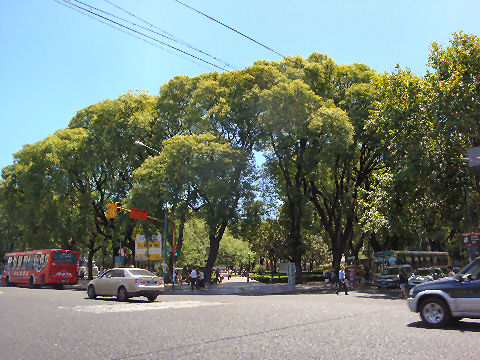
So first, a look from across corner at the plaza itself, taking up a block on a side. It’s a quite pretty plaza and well maintained, and plenty of people out enjoying some sun or sitting on benches reading or chatting.
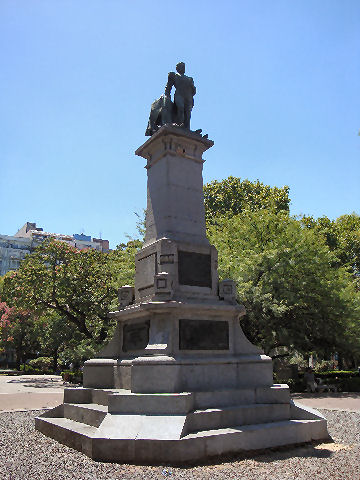
Fronting the plaza onto Rivadavia is a monument to Juan Martín de Pueyrredón, one of the earliest leaders of this country.
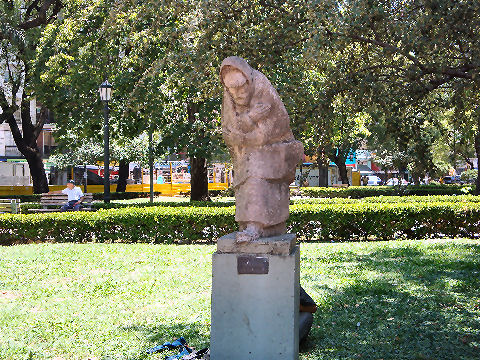
Flanking the monument, a quartet of sculptures by different artists, all actually quite interesting, this one named Contraviento, or, “Ill Wind”, by Pietro Antonuccio.
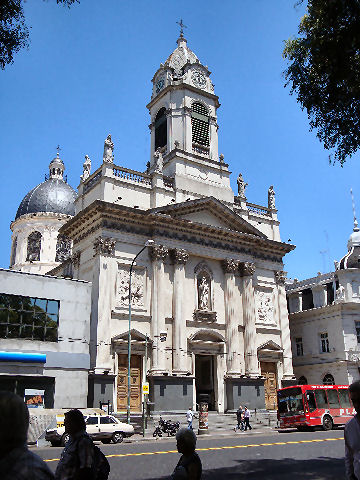
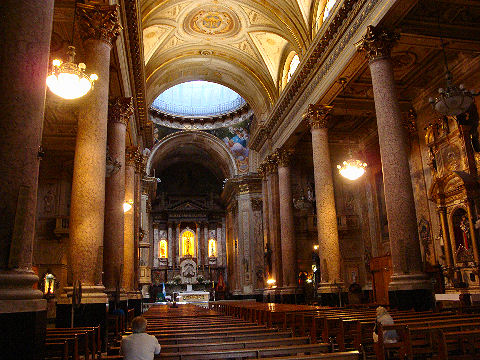
Directly in front of the plaza are two major buildings of historic import. The first, and probably the most important, as the community grew up around it, is the Basílica de San José de Flores, a romanticist structure from 1831. Pretty impressive inside!
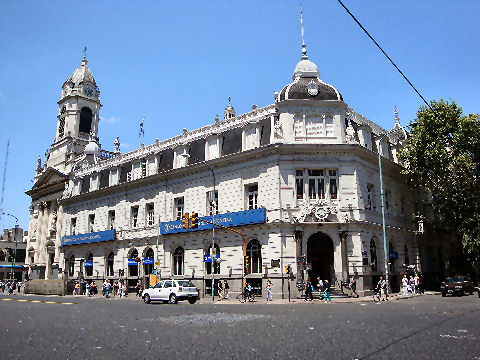
Next to that, the Banco de la Nación, a 1909 French Academic building designed by Carlos Nordmann, surrounded and intertwined with a series of alleyways named after different famous generals of the Royalist forces. The original building was smaller, but was extended in the same style decades later. It also has an interior courtyard which can be visited at certain times of the day.
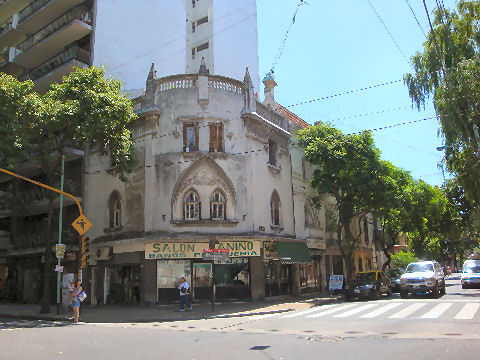
At the back corner of the plaza, at Yerbal and Fray Cayetano Rodríguez, stand two kitty-corner buildings, this one at Yerbal 2405 I can’t find anything about other than that it’s on the historic register as a historic home, no listing as to whose it was originally….
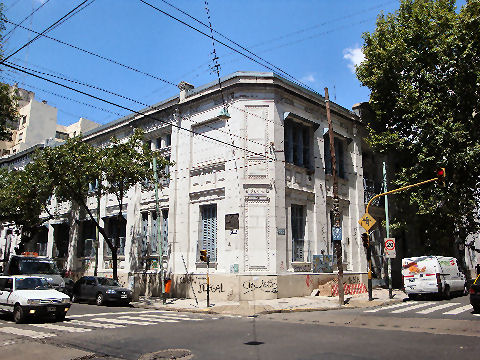
And opposite, the Fernando Fader School of Fine Arts, more important as it was originally the Palacio Las Lilas, an 1880 Tudor style home, built by Englishman Robert Agar who was a local businessman and trustee of the railroad line. The house is built around a central garden. It was taken over by the Ministry of Justrice in 1926 and turned into a school of the arts, which it has been in one guise or another ever since. In 1963 a branch of the city’s Museum of Fine Arts was opened up in one wing of the building and currently displays around 300 works from the collection.
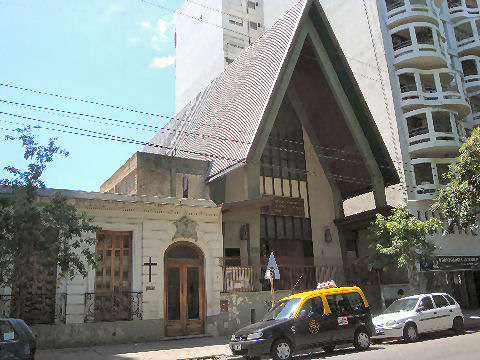
Along the back of the plaza, the Evangelical Methodist Church… Beyond that non-Catholic churches are not overly common here, most of those that are tend to be something towards the Anglican world, due to the British influence. This may be the only Methodist church I’ve seen here, and… evangelical methodists? I have to admit, I had no idea there was such a denomination, but indeed there is, a split with the central methodist church back in 1946 over core ideology – conservative versus liberal in particular, along with such things as a fundamentalist interpretation of the bible and missionary work.
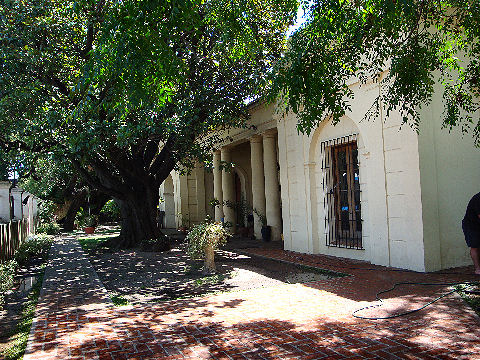
The beautiful little Casa Marcó del Pont at Artigas 206, was a typical home of the mid-1800s, this one specifically built in 1856 or 1871, depending on which sign you read. It is now a national monument and the neighborhood cultural center, with 15 rooms housing the offices of the local historic society, a couple of small gallery rooms displaying local artists’ works, classrooms and a small courtyard with a stage for shows and lectures. Marcó del Pont himself was a Catalan who was the first president of the national lottery and a officer of the Banco de la Nación.
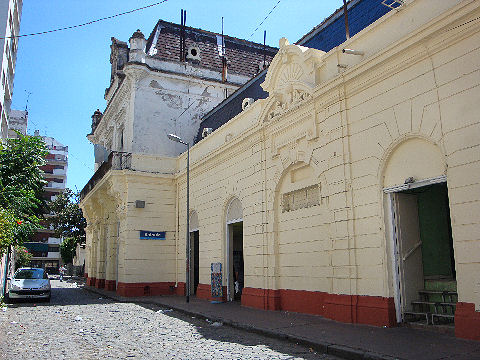
The Flores train station was built in 1864, seven years after the inauguration of the western train line through the area. At the time, it probably didn’t face onto an alleyway, but does now….
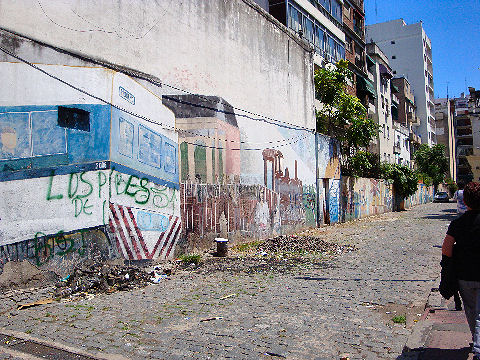
…as it faces onto the narrow Pasaje Hugo Del Carril, the wall of which is festooned with train graffiti and art. Named after one Pierre Bruno Hugo Fontana, more commonly known by the moniker of the alley name, he was an actor, director, radio personality and tango singer who was born in the barrio in 1912.
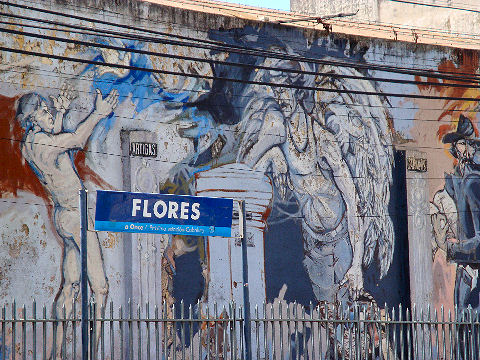
And, finally, the famed Grey Angel mural. A myth created in his 1987 book Chronicles of the Grey Angel, around the barrio by musician, writer and radio broadcaster Alejandro Dolina, based on a tango song about the sorrow of a local man who returns to the barrio after a long absence (which doesn’t directly mention any grey angels, I take it it’s more of an interpretation of an older man’s lament). The mural was painted in 1990 by local artist Carlos Terribili.
From here, I returned along my walk back to Primera Junta, near to which I stopped in at a local restaurant Calcio… a review to come.
[…] in the saddle, or I suppose, on the hoof, again, picking up from where I left off in the heart of Barrio Flores at Plaza Pueyrredón… there’s actually light at the end of the tunnel, so to speak. Av. Rivadavia continues, […]